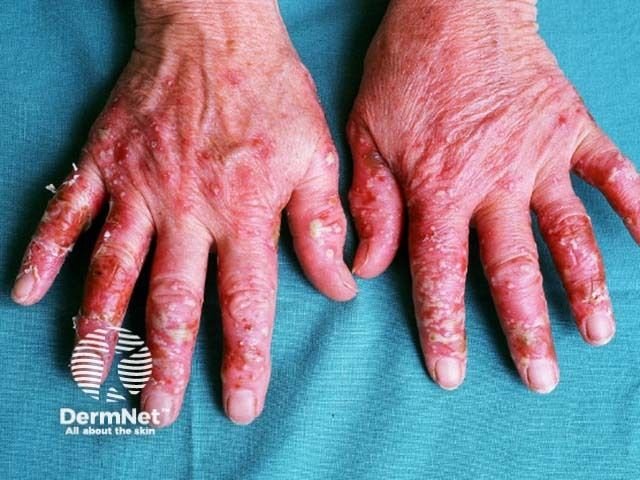Understanding Palmoplantar Pustulosis: Insights from a Comprehensive Korean Study
A recent epidemiological study sheds light on palmoplantar pustulosis (PPP) among patients in Korea, revealing significant treatment gaps and a pressing need for effective management strategies. Published in The Journal of Dermatology, this research emphasizes the importance of tailored therapeutic approaches and the establishment of treatment guidelines to enhance patient outcomes.
Background on Palmoplantar Pustulosis
What is Palmoplantar Pustulosis?
Palmoplantar pustulosis is a chronic dermatological condition characterized by the formation of pustules on the palms and soles. Symptoms often include:
- Severe Itching
- Pain
- Difficulty in Daily Activities
These symptoms can substantially diminish a patient’s quality of life, highlighting the urgency for improved treatment options.
Research Methodology
Conducted across 20 hospitals in Korea, the study involved a cross-sectional observational approach. It enrolled 379 adult patients aged 19 and older, all with a confirmed diagnosis of PPP. Key aspects of the study included:
- Data Collection Period: February to August 2021
- Focus Areas: Demographics, disease characteristics, treatment modalities—including topicals, systemic therapies, and biologics—and patient satisfaction with these treatments.
Key Findings from the Study
The study revealed detailed insights into the demographics and clinical manifestations of PPP, providing a robust analysis of its impact. Here are some key statistics:
Patient Demographics
- Average Age: 51.4 years
- Gender Ratio: 39.3% male; a notable female predominance
- Lifestyle Factors:
- 58.8% of patients were current or ex-smokers.
- 61.5% had a history of alcohol consumption.
Note: Interestingly, no significant correlation was found between lifestyle factors, such as smoking and alcohol consumption, and the severity of PPP.
Disease Severity Metrics
The Palmoplantar Pustulosis Area and Severity Index (PPPASI) revealed the following:
- Mean PPPASI Score: 10.3 (indicating mild to moderate disease)
- Severity Breakdown:
- 66.2% of patients had mild PPP (PPPASI <12).
- More severe cases (PPPASI ≥12) were linked to younger age, increased nail involvement, and a family history of PPP.
Highlights:
- Nail involvement: Observed in 47.7% of severe cases compared to 31.5% in milder cases (p = 0.002).
- Statistical Analysis: Younger age and nail involvement were significant predictors of higher PPPASI scores (p < 0.0001).
Quality of Life Assessment
The impact of PPP on the quality of life was evaluated using the Dermatology Life Quality Index (DLQI) and EQ-5D scores:
- Average DLQI Score: 12.0 (indicating moderate impairment).
- Severe cases (PPPASI ≥12):
- Higher mean DLQI (14.1 vs. 10.9, p < 0.0001).
- Lower EQ-5D scores (57.9 vs. 64.7, p = 0.002).
- Notable physical discomfort, with increased complaints of itching and pain.
Impairment Statistics:
- 52.7% of patients had a DLQI score ≥11, indicating significant interference in social and emotional activities.
Conclusions and Future Directions
While the findings provide crucial insights into the burden of PPP, the study acknowledges limitations, including its cross-sectional design and reliance on self-reported data. The authors emphasize:
“Despite most patients receiving some form of treatment, the burden of PPP tends to persist for many.”
The call for action is clear: to enhance the quality of life for patients with PPP, healthcare providers must develop more effective and targeted treatment options and implement better supportive interventions.
Moving Forward
As researchers continue to explore PPP, the development of more targeted treatment strategies is essential. Addressing treatment gaps and enhancing therapeutic protocols will ultimately lead to improved patient outcomes. For additional information on palmoplantar pustulosis and its management, consider visiting DermNet, which offers a wealth of resources on dermatological conditions.
References
- Jo SJ, et al. “Disease features, treatments, and burden of palmoplantar pustulosis in Korea: The EPPPIK study.” J Dermatol. 2025.
- Freitas E, et al. “Diagnosis, screening, and treatment of patients with palmoplantar pustulosis (PPP): A review.” Clin Cosmet Investig Dermatol. 2020.
- Kubota K, et al. “Epidemiology of psoriasis and palmoplantar pustulosis.” BMJ Open. 2015.
For readers seeking further understanding of PPP, please refer to specialized dermatological resources and ongoing studies in this field.


